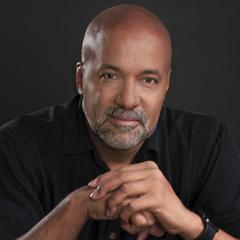 Workshops
Workshops
We were honored to have the first in a series three workshops at our September 16, 2018 meeting. Our first workshop was The BUSINESS of PROFESSIONAL PHOTOGRAPHY Presenter: Victor Powell Victor Powell is a true visionary at his craft. His enthusiasm and excitement are still very apparent, even after 40 + years in the photography/creative services industry. |
 Link Of The Month
Link Of The Month
Privacy and Copyright for Photographers: What You Need to Know
Learning about the basics of laws concerning photography is more important than ever. Whether you're a professional or a hobbyist, the laws apply to you. Inadvertently breaking the law by taking or sharing a photo that's not allowed, or using someone else's photo in an illegal way, can get you in a lot of trouble with the law — and cost you thousands of dollars in legal fees.
Before you snap your next photo or use an image you find online, make sure you're familiar with how privacy and copyright laws work. Visit:Privacy and Copyright for Photographers: What You Need to Know.
 Must Have Books
Must Have Books
Great photographers have great libraries on their craft, and YES they have actually read the books. Here is a must have book for your library.
The Artist's Odyssey By Curtis J. Kojo Morrow
CAAAP member Curtis J. "Kojo" Morrow has lead an amazing life as a photographer, an artist, a writer and even a jeweler.
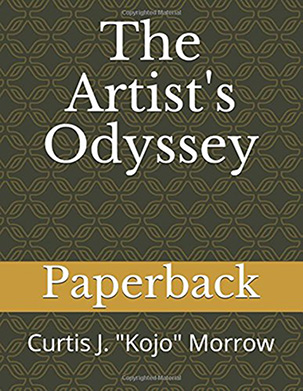
"My Odyssey begins with family and well-wishers expressing their opinions about what I could not do. When asked why their response was simply "because you are African American and African American's just don't do those things." Well, so far I have accomplished everything that I set out to do in my exciting epic journey. For details of my Odyssey, visit the online website below: http://mysankofa2012.artspan.com Now, after thirty-five years of World Travels, Jewelry Designing, and Lost Wax Casting, I have returned to my first love, oil painting, and freelance photography. This paperback version of the "Artist's Odyssey" contains 180 + pages of Arts and Travels, Photos from 1966 to the present date 2017. A few photos may appear a little blurred due to age, but it's the Odyssey Journey that I wish to share. ENJOY and SHARE."
You can purchase his book, The Artist's Odyssey on Amazon here.
Photo-Editing and Presentation: A Guide to Image Editing and Presentation for Photographers and Visual Artists (Photo-Developing) by Douglas Holleley (Paperback - Mar. 2009)
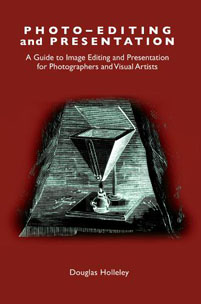 { intro_editing.pdf } – This is just the introduction to the book but you can order it at Amazon.com Summary: - images are fully interdependent and their order or viewing is important/complex - variety of picture to picture relationships (visual structure, repeated motifs, color/form, metaphor) - the way the work is revealed to the viewer is carefully considered As you set up your images for presetation, here are some questions to ask yourself… |
 Videos of the Month
Videos of the Month
| The new book “Pictures and Progress,” co-edited by Duke Professor Maurice Wallace, looks at how the invention of photography was used for and against political gain for African Americans. Wallace introduces the book in an interview with Duke News video intern Thomas Leak. Learn more about the Duke University Press book here. | Balancing Your Life with Ellen Susman - A Deborah Willis Interview - Ellen talks with Deborah Willis about her pioneering work as an Afro-American photographer, teacher and curator/historian. A Guggenheim fellow and the recipient of a MacArthur Fellowship, Willis describes her groundbreaking studies of the Black female body, her experience as a breast cancer survivor, and explains why photographs play such an important role in telling the stories of our lives. |
Part one of a series of episodes dedicated to basic studio lighting principles. In this episode Mark Wallace explains sync speed and how you can use it to eliminate the ambient light in your studio. |
|
The basics of Aperture, Shutter Speed, and ISO. |
Power of Photojournalism |
A documentary about photographer David Johnson, now 84 years old, who is the first African American student of famed photographer Ansel Adams. But unlike Ansel Adams, David Johnson found his landscape on the street where he lived. Images of people living with respect and dignity in a world of civil rights struggles and neighborhoods changed beyond recognition.He produced an invaluable collection of black and white images from 1946 to 1966 showing the social, political and private lives of Blacks living in San Francisco's Fillmore District. His work has been featured in galleries, books, and PBS documentaries. Several of his prints are included in the Library of Congress and his name is etched in concrete at the Fillmore Plaza in San Francisco.
 African American Legends in Photography
African American Legends in Photography
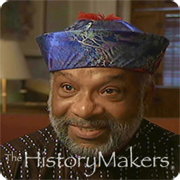 |
African American Legends: Chester Higgins, Jr., has worked as a New York Times photographer since 1975 and has exhibited in museums throughout the world. His one-man exhibitions have appeared at the International Center of Photography, The Museum of Photographic Arts, The Smithsonian Institution, The Museum of African Art, Musée Dapper Paris, The Schomburg Center, The New-York Historical Society and the Schatten Gallery at Emory University. Check out this interview with CUNY's African American Legends. Visit the amazing photographic world of Chester Higgins Jr. |
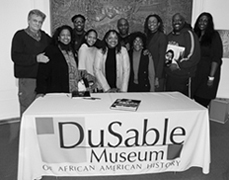 |
Photographer, author, and Lecturer, DEBORAH WILLIS, PH.D. (Professor of Photography and Imaging in New York University, and at the Tisch School of the Arts Department of Photography and Imaging) named among the 100 Most Important People in Photography by American Photography Magazine, Dr. Deborah Willis is Chair and Professor of Photography and Imaging at Tisch School of the Arts, New York University, where she also has an affiliated appointment with the College of Arts and Sciences, Africana Studies. A 2005 Guggenheim and Fletcher Fellow, a 2000 MacArthur Fellow, 1996 Recipient of the Anonymous Was a Woman Foundation Award, and now an artist, she is one of the nation's leading historians of African American photography and curator of African American culture. Check out this fabulous trailblazer. |
CRITIQUING: GIVING AND RECEIVNG One of the best ways to improve as a photographer is frequent critiquing, giving it as well as and receiving it.
How well do you know the basic terms and elements of photography?
Take the Basic Photography Quiz. And then check your answers Basic Photography Quiz Answers
Jules Lion...The first African American Photographer
William Henry Fox Talbot, British inventor and a pioneer of photography.
Photographer's Rights in Public Spaces
A very helpful single sheet printout written by Bert P. Krages II. He is a lawyer who specializes in this type of law. Print this out and keep it in your camera bag if you photograph in public spaces. If someone gives you a hard time for photographing in a place you know you have a right to be, this may help you out (but these days it may not).
Photographer’s Rights Letter to NPPA
A more in-depth, and perhaps more official, document written by Kurt Wimmer and John Blevins of Covington & Burling to the National Press Photographers Association in August of 2005. The letter outlines very specifically the rights of journalists on public streets. A good document to have both a digital and a hard copy of somewhere handy.
You Should be Shooting Something Everyday
The Thing Itself: The fundamental principle of photography. An article written by Bill Jay who believes an earnest and honest appreciation of subject matter is the genesis of a clearer, deeper vision. Photography is rooted in The Thing Itself.
This article has been reproduced more often than any other piece he has written. It was first
published in Newsletter, Daytona Beach Community College, in 1988 - but it is still being used by and copied for college students.
Cost of Doing Business Calculator
If you want to figure out what YOUR cost-of-doing-business is, try this easy-to-use calculator.


